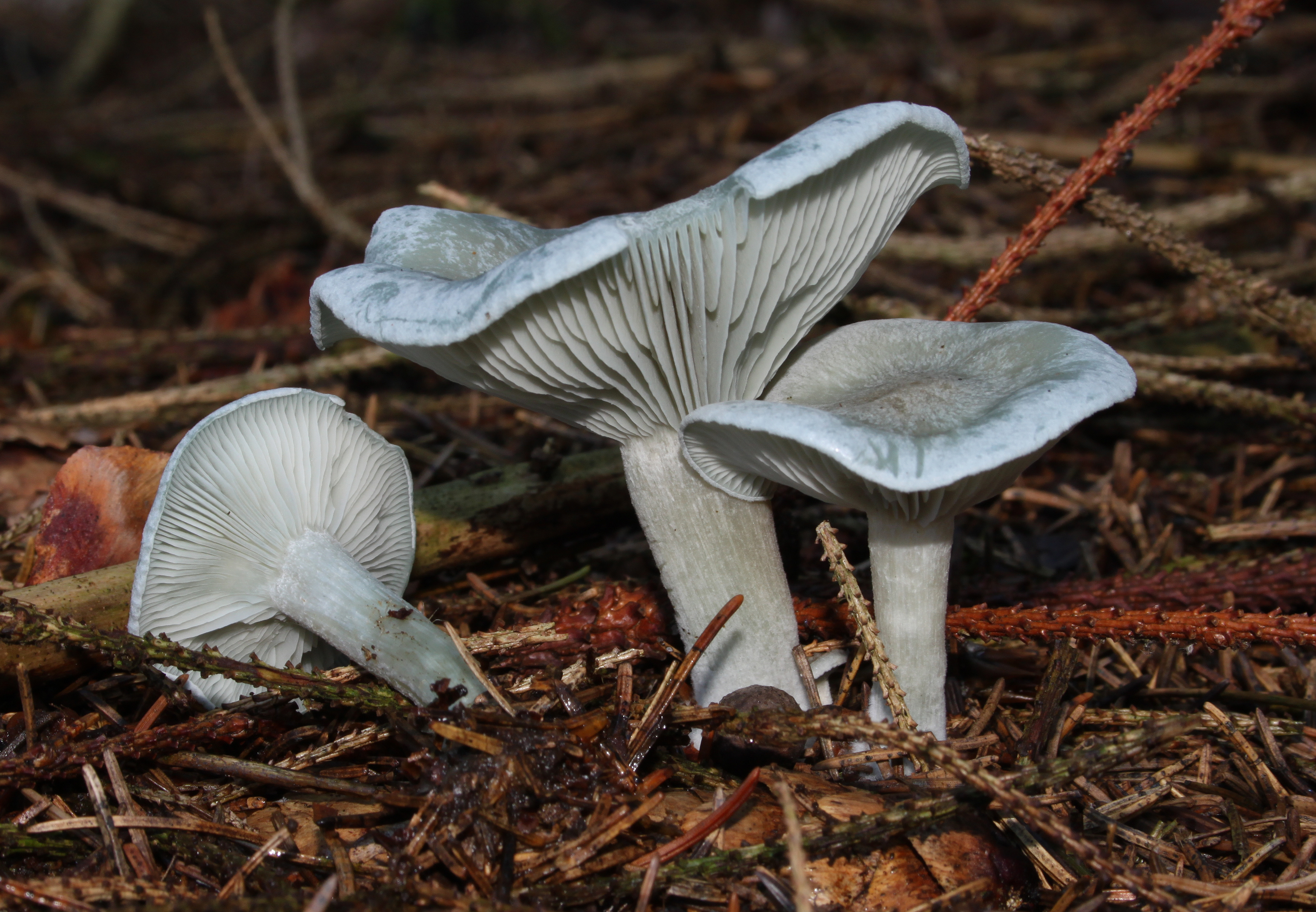|
Clitocybe Brumalis
''Clitocybe brumalis'', commonly known as the winter funnel cap, ''brumalis'' signifying "wintry", is an inedible mushroom of the genus '' Clitocybe''. It grows in deciduous and coniferous woodland, only in winter; sometimes even under snow. Description The cap is convex or umbilicate when young, soon funnel-shaped. Pale when moist, with a weakly translucent and striped margin, almost white when dry, it grows up to 5 cm in diameter. The gills are dirty white, crowded and a little decurrent. The spores are also white. The stem is pale brown, striped and soon hollow, with a white, felty base. The flesh is dirty brown. Similar species Several species growing in autumn look very similar and are difficult to distinguish without a microscope. References *E. Garnweidner. ''Mushrooms and Toadstools of Britain and Europe''. Collins. 1994. External links * * brumalis Fungi described in 1872 Fungi of Europe Taxa named by Elias Magnus Fries {{Tricholomataceae-stub ... [...More Info...] [...Related Items...] OR: [Wikipedia] [Google] [Baidu] |
Lucien Quélet
Lucien Quélet in 1869 Lucien Quélet (14 July 1832 – 25 August 1899) was a French naturalist and mycologist. Quélet discovered several species of fungi and was the founder of the Société mycologique de France, a society devoted to mycological studies. Quélet, having been born in Montécheroux, Doubs, to a farmer, was soon orphaned, and spent his childhood with and was raised by his aunts. In his youth, he is known to have shown a great interest in mycology and botany in general, but also other subject areas such as ornithology and malacology, the study of mollusks. He was schooled at the Montbéliard college, and later studied medicine in Strasbourg. In 1884, he founded the mycological society known as the Société mycologique de France, of which he became the first president. Several years after this, in 1888, Quélet wrote a book, ''Flore mycologique de la France et des pays limitrophes'' (''Mycological flora of France and neighbouring countries''). Quélet also des ... [...More Info...] [...Related Items...] OR: [Wikipedia] [Google] [Baidu] |
Clitocybe
''Clitocybe'' is a genus of mushrooms characterized by white, off-white, buff, cream, pink, or light-yellow spores, gills running down the stem, and pale white to brown or lilac coloration. They are primarily saprotrophic, decomposing forest ground litter. There are estimated to be around 300 species in the widespread genus. ''Clitocybe'' means ''sloping head''. A few members of the genus are considered edible; many others are poisonous, containing the toxin muscarine among others. Distinguishing individual species of ''Clitocybe'' is generally prohibitively difficult to non-experts, requiring the analysis of microscopic characters. Therefore, with the exception of a few charismatic and readily identified members, ''Clitocybe'' mushrooms are rarely collected for consumption. Taxonomy ''Clitocybe'' was originally proposed by Elias Fries in 1821 as a tribe in the genus ''Agaricus''. Friedrich Staude elevated it to generic status in 1857. Recent molecular work has shown the genus ... [...More Info...] [...Related Items...] OR: [Wikipedia] [Google] [Baidu] |
Fungi Described In 1872
A fungus ( : fungi or funguses) is any member of the group of eukaryotic organisms that includes microorganisms such as yeasts and molds, as well as the more familiar mushrooms. These organisms are classified as a kingdom, separately from the other eukaryotic kingdoms, which by one traditional classification include Plantae, Animalia, Protozoa, and Chromista. A characteristic that places fungi in a different kingdom from plants, bacteria, and some protists is chitin in their cell walls. Fungi, like animals, are heterotrophs; they acquire their food by absorbing dissolved molecules, typically by secreting digestive enzymes into their environment. Fungi do not photosynthesize. Growth is their means of mobility, except for spores (a few of which are flagellated), which may travel through the air or water. Fungi are the principal decomposers in ecological systems. These and other differences place fungi in a single group of related organisms, named the ''Eumycota'' (''true f ... [...More Info...] [...Related Items...] OR: [Wikipedia] [Google] [Baidu] |
Fungi Of Europe
A fungus (plural, : fungi or funguses) is any member of the group of Eukaryote, eukaryotic organisms that includes microorganisms such as yeasts and Mold (fungus), molds, as well as the more familiar mushrooms. These organisms are classified as a Kingdom (biology), kingdom, separately from the other eukaryotic kingdoms, which by one traditional classification include Plantae, Animalia, Protozoa, and Chromista. A characteristic that places fungi in a different kingdom from plants, bacteria, and some protists is chitin in their cell walls. Fungi, like animals, are heterotrophs; they acquire their food by absorbing dissolved molecules, typically by secreting digestive enzymes into their environment. Fungi do not photosynthesize. Growth is their means of motility, mobility, except for spores (a few of which are flagellated), which may travel through the air or water. Fungi are the principal decomposers in ecological systems. These and other differences place fungi in a single gro ... [...More Info...] [...Related Items...] OR: [Wikipedia] [Google] [Baidu] |


